标题:CoCA v1.1.0:基于元胞自动机模型的“土地-人口-经济”空间协同模拟平台
Title:CoCA v1.1.0:Spatial Cooperation Development Platform Simulation for "Land-Population-Economy" based on Cellular Automaton Model
在发布v1版本的软件后,我们收到了很多软件使用的反馈。在吸收并采纳用户的建议后,我们进行了一系列的优化工作,例如界面体验优化、算法效率和响应速度的提升。在上述工作的基础上,我们最终开发出了CoCA v2 版本,以提供更好的软件使用体验。
After releasing the v1 version of the software, we received a lot of feedback on the use of the software. After absorbing and adopting users' suggestions, we carried out a series of optimization work, such as interface experience optimization, algorithm efficiency and response speed improvement. Based on the above work, we finally developed CoCA v2 to provide a better experience of using the software.
更多有关最新版本CoCA的信息,请移步CoCA v2.1.0:基于元胞自动机模型的“土地-人口-经济”空间协同模拟平台
For more information about the latest version of CoCA, please go to CoCA v2.1.0: Spatial Cooperation Development Simulation Platform for "Land-Population-Economy" based on Cellular Automaton Model
介绍(Introduction)
CoCA,即基于元胞自动机模型的“土地-人口-经济”空间协同模拟平台,可以为广大城市研究人员和城市规划人员提供帮助。CoCA的算法和软件由中国地质大学(武汉)和深圳大学团队共同开发。
CoCA, which stands for Cellular Automaton-based Spatial Cooperation Development Simulation Platform for "Land-Population-Economy", provides assistance to urban researchers and planners. The algorithms and software of CoCA were jointly developed by teams from China University of Geosciences (Wuhan) and Shenzhen University.
CoCA以地理空间数据为基础,提供了基础的GIS功能,如空间数据的导入、导出、符号化与漫游功能等。
CoCA provides essential GIS functionalities based on geospatial data, including basic features such as importing, exporting, symbolizing, and navigating spatial data.
CoCA提供了数据预处理功能,可以处理离散型数据和连续性数据。其功能包含设置空值、归一化、基于栅格计算器计算部分指标、空间重采样、基于遥感影像分类获取土地利用数据、空间投影和连续数据离散化等。
CoCA offers data preprocessing capabilities to handle both discrete and continuous data.These functionalities include setting null values, normalization, calculating partial indicators using the raster calculator, spatial resampling, acquiring land-use data based on remote sensing image classification, spatial projection and discretization of continuous data.
CoCA提供了离散型CA模拟方法,基于离散化方法完成城市发展要素的模拟。
CoCA provides discrete Cellular Automaton (CA) simulation, which utilizes discretization methods to simulate urban development factors.
同时,CoCA提供连续型CA模拟方法,基于连续型方法完成城市发展要素的模拟。
CoCA also offers continuous Cellular Automaton simulation, which uses continuous methods to simulate urban development factors.
CoCA提供了四种指标来评估离散型数据(如土地利用)和连续型数据(人口密度和GDP密度)的模拟结果,分别是品质因数(FoM)、总体精度(OA)、平均绝对百分比误差(MAPE)和均方根误差(RMSE)。
CoCA provides four indicators to evaluate the simulation results of both discrete data (e.g., land use) and continuous data (population density and GDP density). These indicators are Quality Factor (FoM), Overall Accuracy (OA), Mean Absolute Percentage Error (MAPE), and Root Mean Square Error (RMSE).
CoCA提供了一种逐步的多要素空间协同变化模拟方法,采用“层次递进”的思想。用户可以模拟预测不同场景下的城市发展要素。
CoCA provides a step-by-step, multi-factor spatial synergy simulation that utilizes a hierarchical and progressive approach. Users can simulate and predict urban development elements under different scenarios.
CoCA1.1功能(Features)
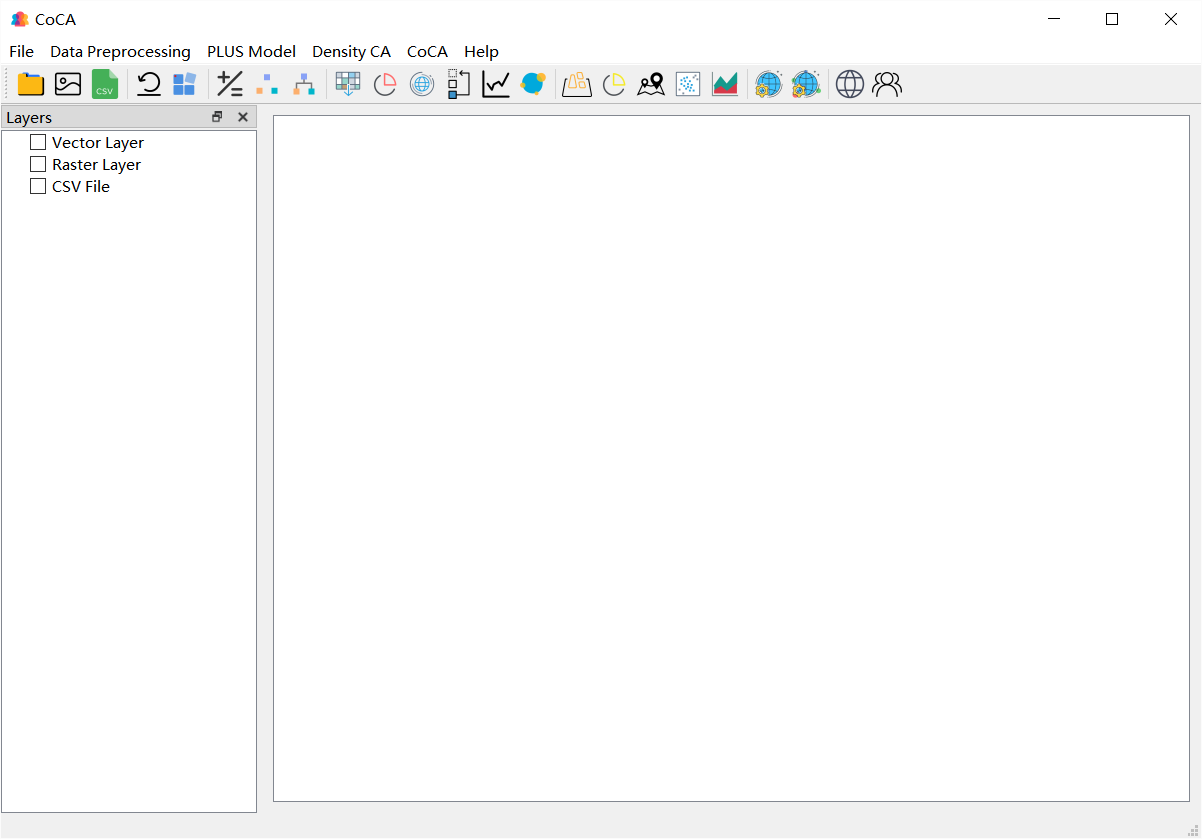
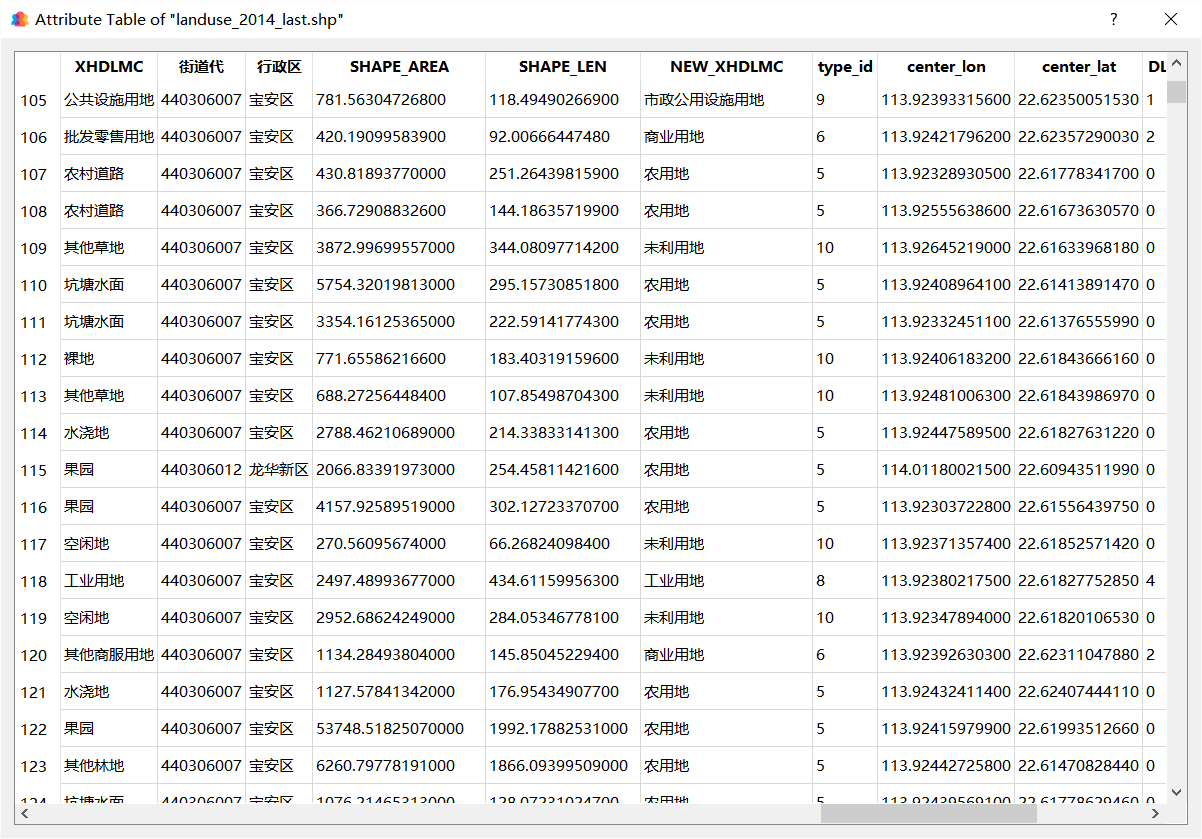
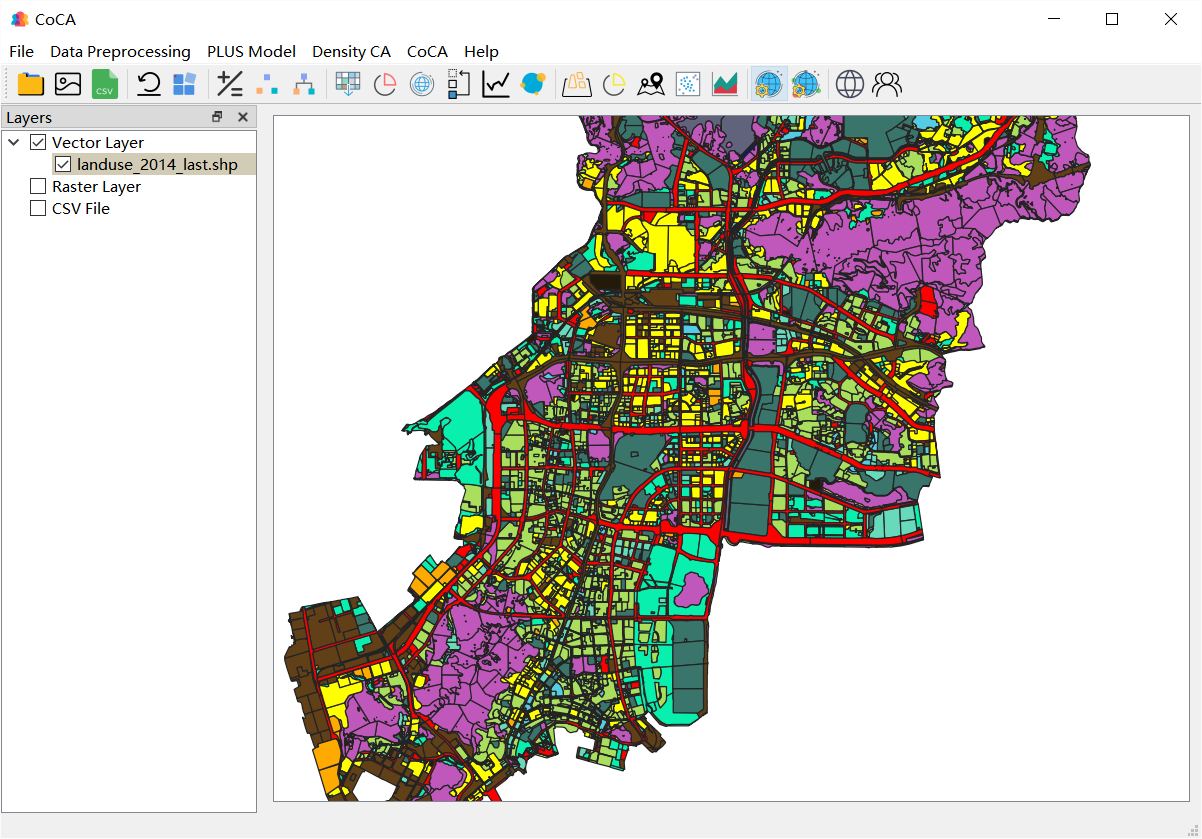
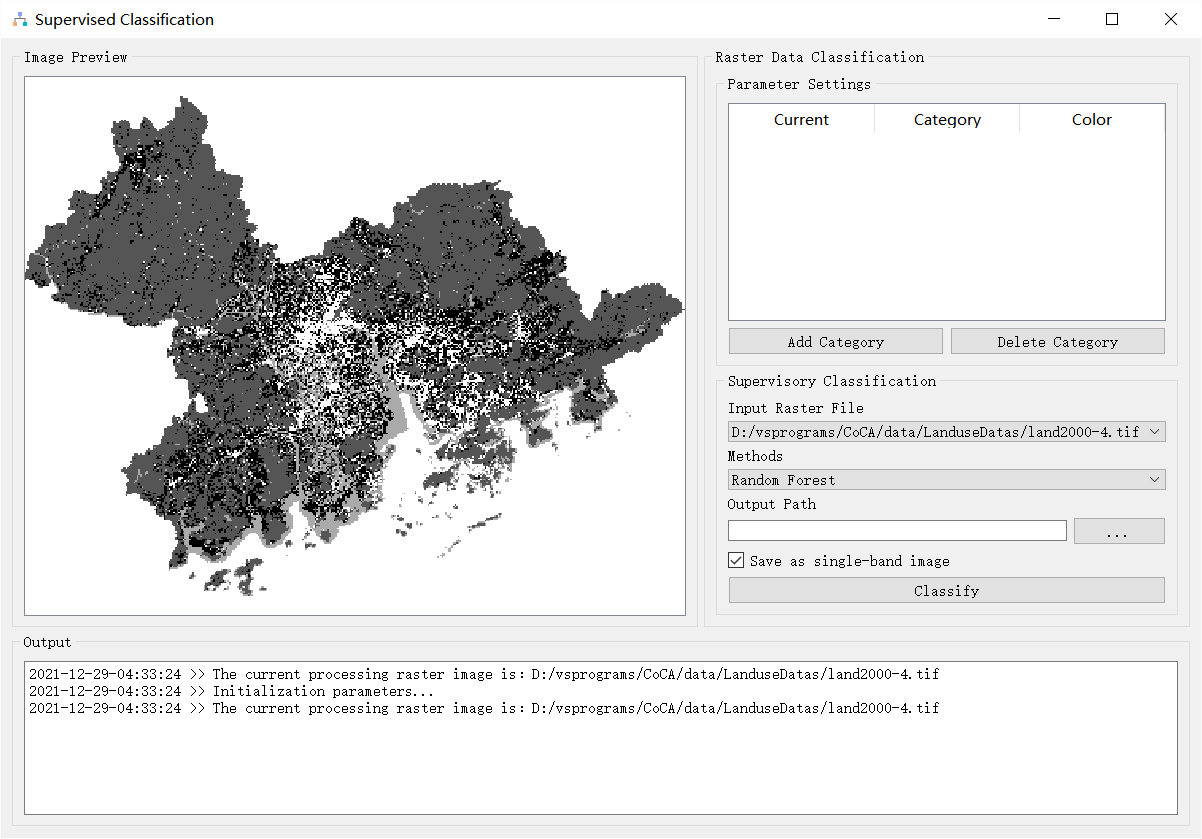
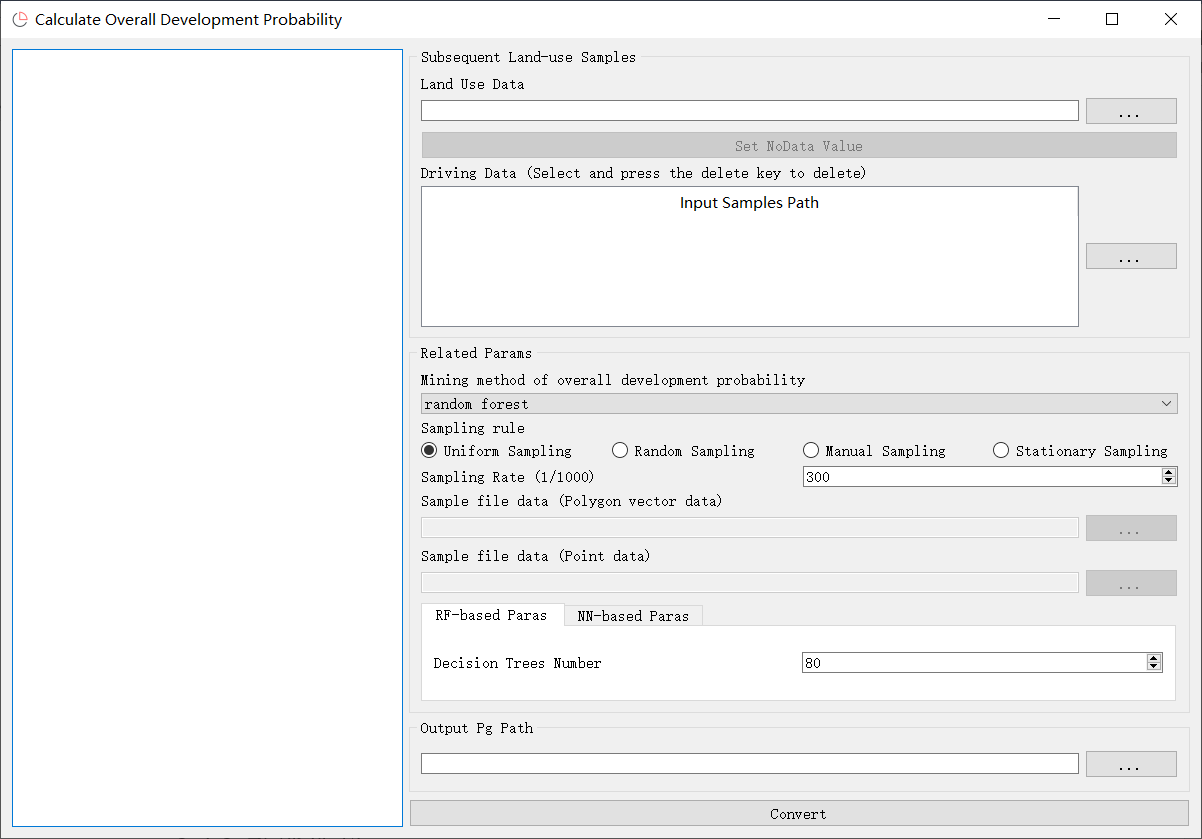
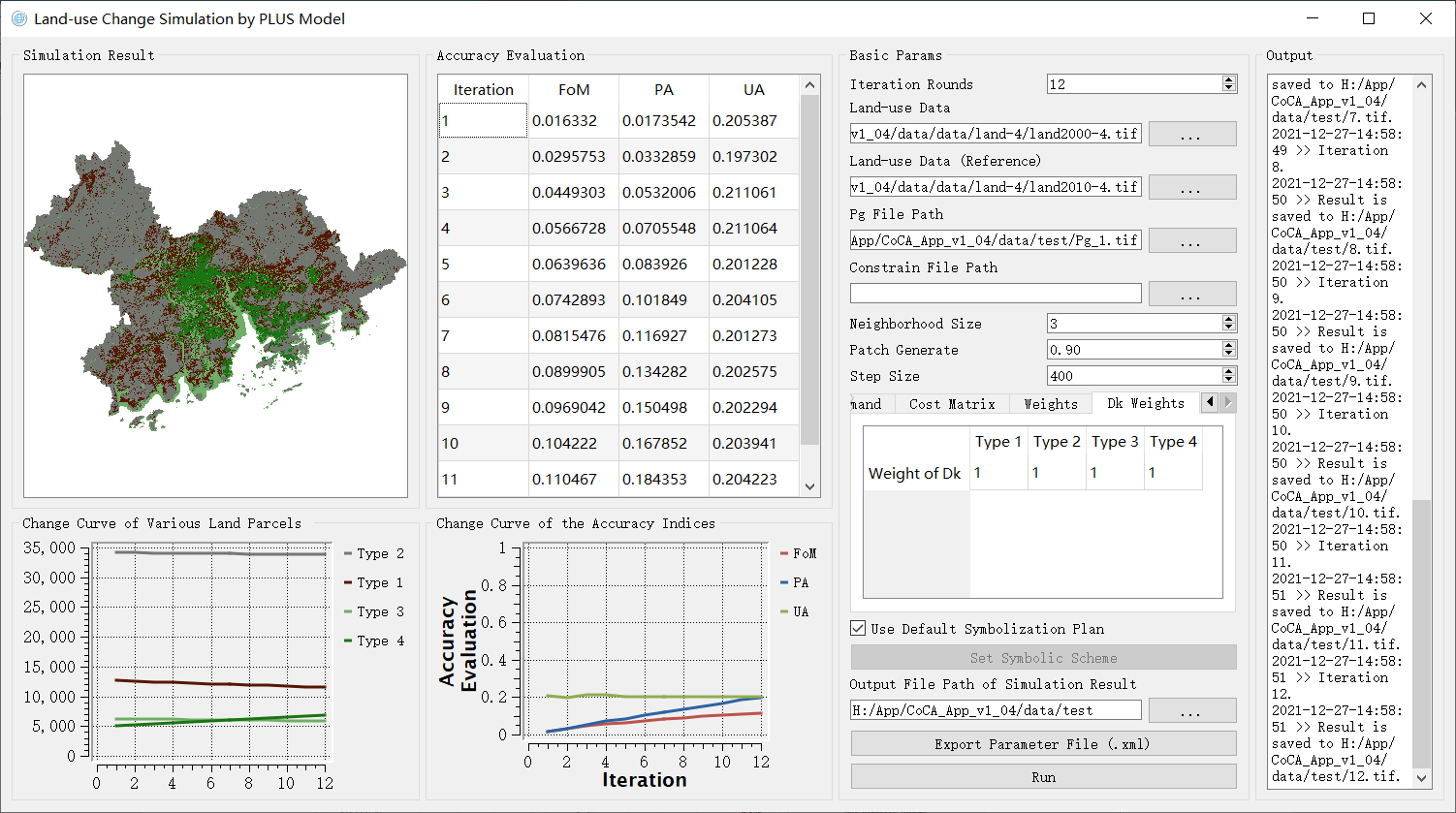
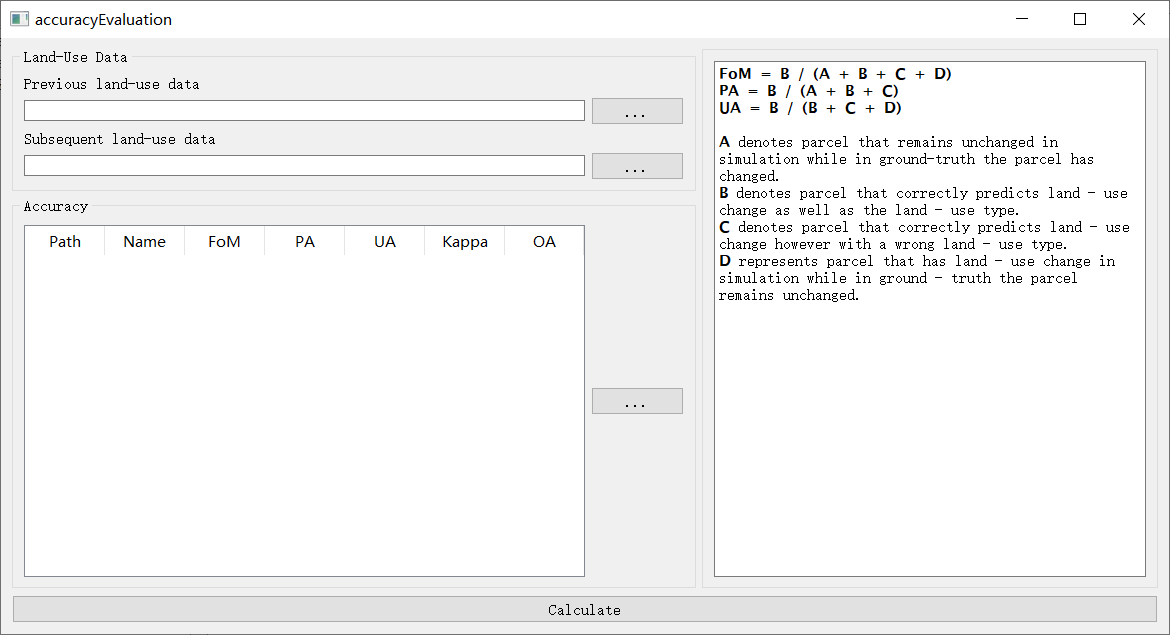
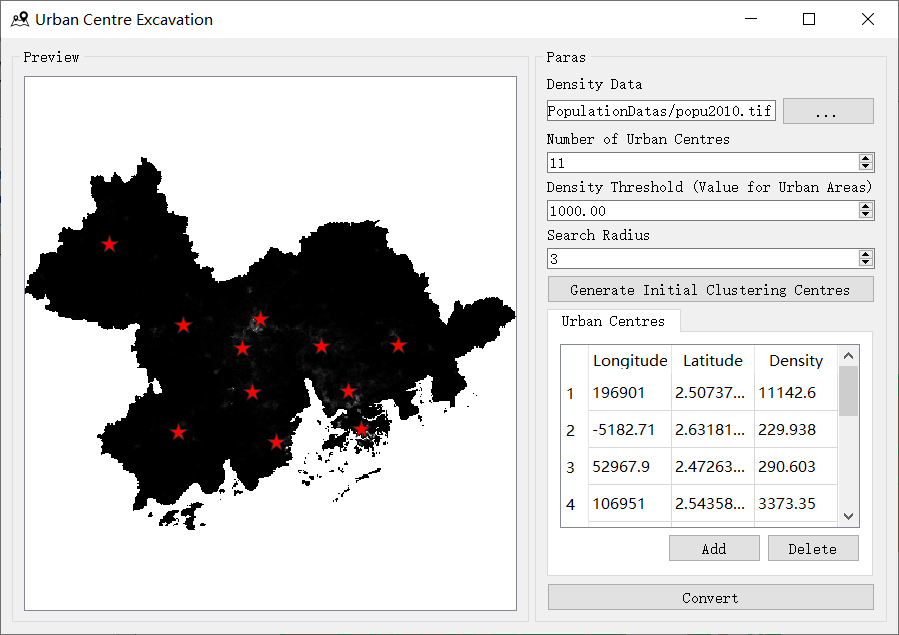
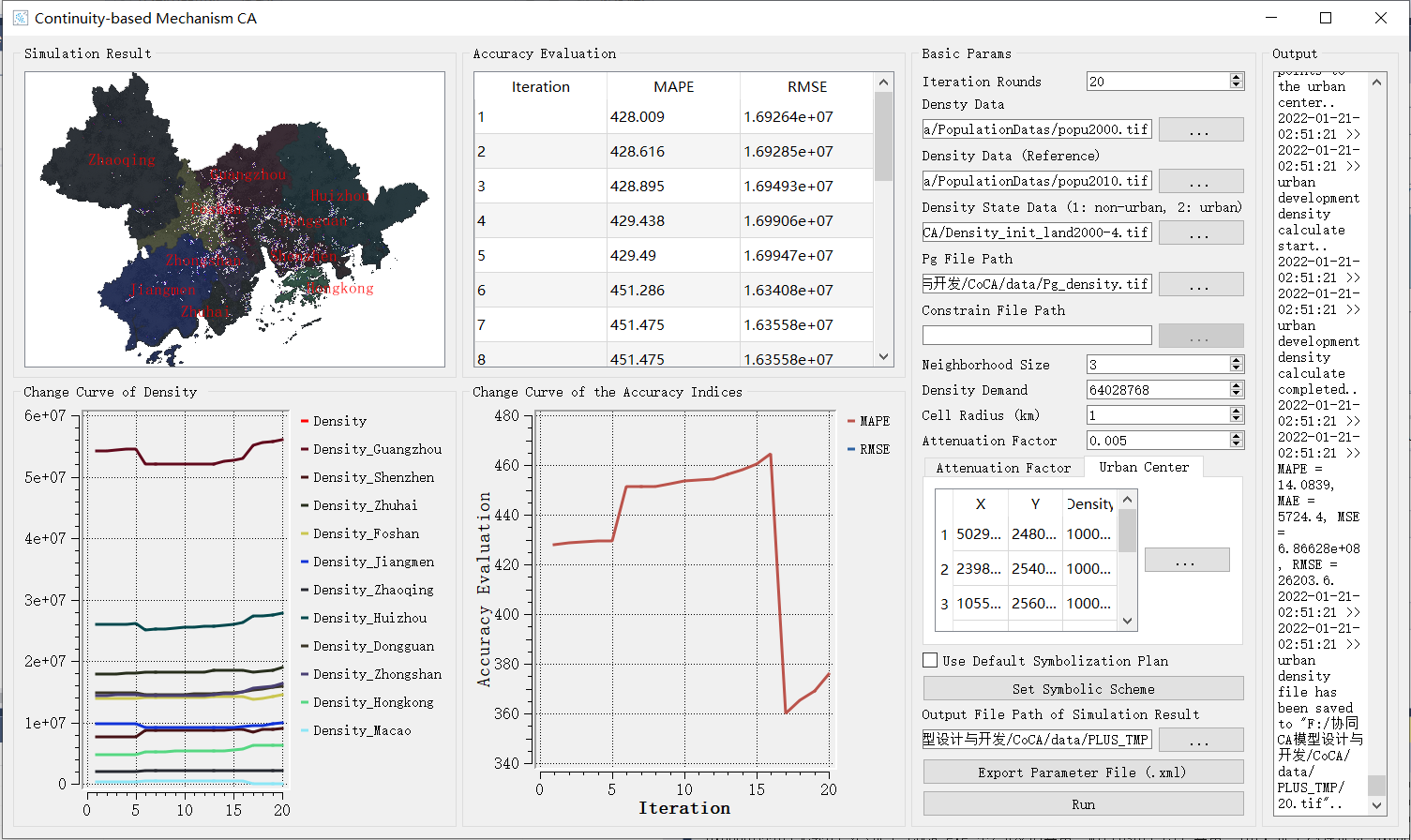
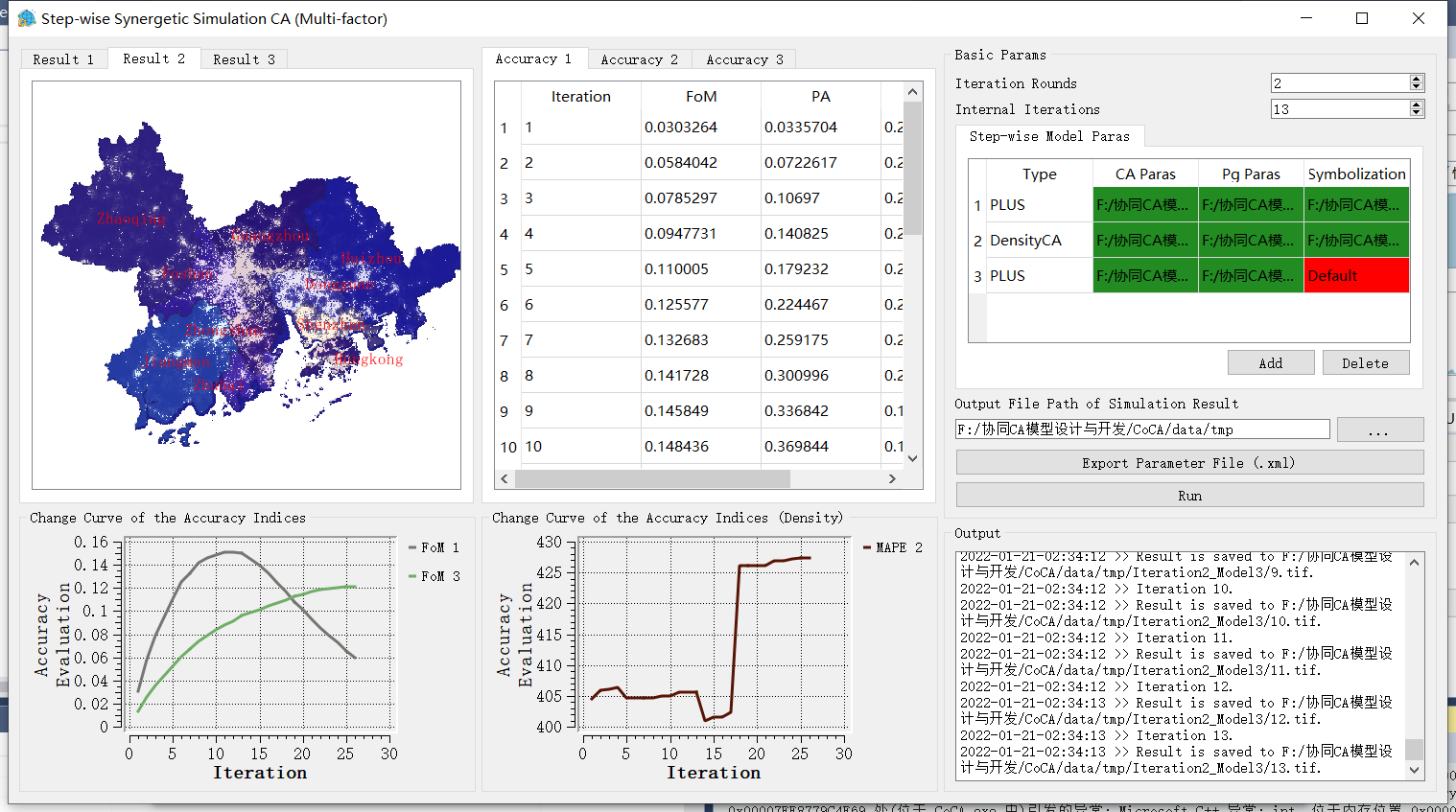
软硬件系统需求 (Software and Hardware System Requirements)
内存 >= 4GB (RAM >= 4GB)
硬盘空间 >= 3GB (Hard Disk Space >= 3GB)
Windows 8.1及以上版本 (Windows 8.1/10 or above)
Visual C++ Redistributable 2017
软件使用说明书(Software Manual)
软件下载(Software Download)
点击此处下载安装包 (Click here to download install pack)
CoCA目前主要为团队内测试使用,如果需要使用,请和姚尧老师( yaoy@cug.edu.cn )申请获取安装包密码。
或关注微信公众号“UrbanComp位置智能和城市感知”,在后台发送“CoCA_PWD”获取软件压缩包密码。
该软件仅为学习和科研用途,请勿用于商业用途。
Currently, CoCA is mainly for testing within the team. If you need to use it, please apply to Yao Yao-sensei (yaoy@cug.edu.cn) to get the password for the installation package.
Alternatively, you can follow the WeChat official account "UrbanComp位置智能和城市感知" and send "CoCA_PWD" in the background to get the software compression package password.
This software is for learning and research purposes only, please do not use it for commercial purposes.
软件著作权(Software Copyright)
CoCA:基于元胞自动机模型的“土地-人口-经济”空间协同模拟软件
参考文献(Refereneces)
- Tu W, Gao W, Li M, et al. Spatial cooperative simulation of land use-population-economy in the Greater Bay Area, China [J]. International Journal of Geographical Information Science: 1-26. ( 站内链接(Internal Link) )
Q.E.D.









